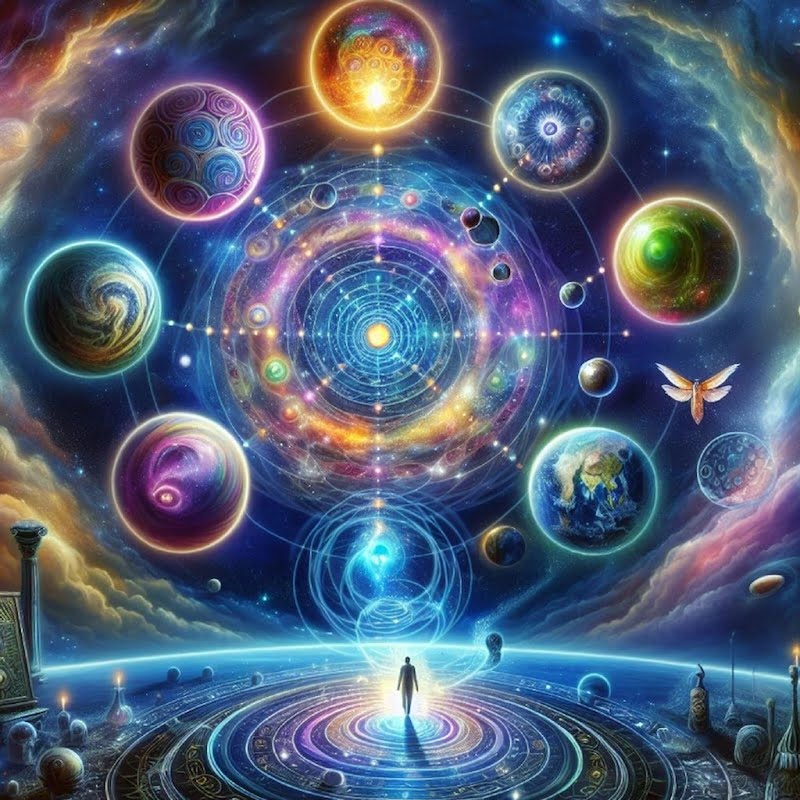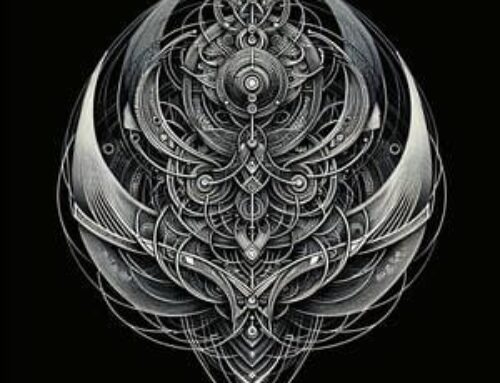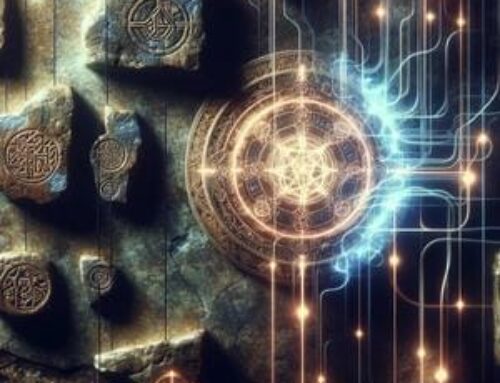Contents
Introduction to Angel Magick
In the dimly lit corridors of history, where the echoes of the ancient esoteric teachings still resonate, “angel magick” stands as a beacon of mystical knowledge and divine interaction. This venerable practice, a cornerstone of the Hermetic tradition, offers the intrepid seeker a path to commune with celestial guardians, those luminous entities that dwell in the sublime realms beyond our ordinary senses. The term “magick” is used instead of “magic” to distinguish the profound, ritualistic practice of spiritual and esoteric arts from the common sleight of hand or entertainment magic.

The essence of angel magick is rooted deeply in the understanding that these celestial beings serve as intermediaries between the Divine Will and human experience. They are not merely servants, but powerful allies, guiding the adept through complex spiritual landscapes and imparting wisdom that transcends earthly concerns. Each practitioner who walks this path engages in a profound dialogue with these spiritual entities, crafting a bond that is both protective and enlightening.
As we embark on this exploration of angel magick, we delve into its rich historical tapestry, tracing its origins back to ancient texts and obscured rituals. We uncover the practical aspects of engaging with these celestial beings through ritual and reverence, and we contemplate the philosophical underpinnings that elevate the practice from mere conjuration to a profound spiritual communion.
Historical Origins and Development of Angel Magick
Ancient Roots and Sacred Texts
Angel magick’s roots can be traced back to ancient civilizations where the interaction with divine forces was embedded in daily religious practices. This esoteric art form was profoundly influenced by the mystical teachings found in sacred texts such as “The Book of Enoch” and “The Key of Solomon,” which elaborate on the hierarchies and names of angels. These manuscripts provided the blueprint for the summoning and invocation practices that define angel magick, presenting a structured way to access celestial guidance and support.
Hermes discusses the awakening of his mind to the divine presence, marking the beginning of his journey into spiritual wisdom. “It chanced once on a time my mind was meditating on the things that are, my thought was raised to a great height” (1).
Renaissance Revival and Hermetic Influence
During the Renaissance, a revival of interest in Hermetic philosophy and Kabbalistic lore brought angel magick to the forefront of spiritual practice. Scholars like John Dee and Heinrich Cornelius Agrippa delved into angelic communication, enriching the tradition with their extensive works on angelology and magical theurgy. Their contributions emphasized the role of angels as intermediaries between God and man, capable of influencing both spiritual insight and tangible outcomes in the physical world.
Hermes’ discourse on the nature of God as the ultimate good, beyond human comprehension. “God is not a Mind, but the Cause that the Mind is; not a Spirit, but the Cause that the Spirit is; not Light, but the Cause that Light is” (2).
Modern Interpretations and Practices
In contemporary times, angel magick has transcended its mystical origins to adapt to modern esoteric practices. Today, it is often practiced within the frameworks of Western esoteric traditions, where practitioners use rituals and meditations to forge personal connections with their guardian angels. These modern adaptations highlight the personal growth and self-discovery that can be achieved through this ancient art, making angel magick a tool for personal transformation and enlightenment.
Practical Aspects of Angel Magick
Essential Tools and Their Significance
Engaging in angel magick requires a set of specialized tools that enhance the connection to the celestial realms. Commonly, practitioners utilize items like candles for illumination and focus, incense to purify the space and elevate the mind, and crystals to amplify spiritual energy. Each tool is not merely functional but symbolically resonant, chosen carefully to correspond with specific angelic energies. For instance, different colored candles might be used to represent various angelic attributes, while specific incense scents align with the intended angelic invocation.
Ritual Preparation
The efficacy of angel magick rituals often depends on meticulous preparation. This begins with the creation of a sacred space, usually marked by casting a circle to delineate the spiritual realm from the mundane and to protect the practitioner from extraneous energies. The space is cleansed physically and spiritually, creating a pure environment conducive to spiritual work.
Invocation Techniques
The core of angel magick practice is the invocation of angels. This is done through a combination of chanting, visualization, and the use of sigils—complex symbols that represent the angels. Practitioners may use specific prayers or invocations that have been passed down through esoteric traditions or may create their own, provided they maintain the traditional structure that respects the angel’s nature and hierarchy. The use of the angel’s traditional name is critical, as it is believed to be a vibrational key that makes contact with the angel more accessible.
Documentation and Reflection
Maintaining a magical diary is crucial for practitioners of angel magick. This diary acts as a spiritual logbook where experiences, results of rituals, and personal reflections are recorded. It serves as a tool for introspection and analysis, helping the practitioner track their progress, understand the nuances of their interactions with the angelic beings, and refine their practices based on past experiences.
Philosophical and Theological Implications of Angel Magick
The Nature of Angelic Beings
Angel magick is not merely a practice of invocation but a profound exploration into the essence of divine intermediaries. Philosophically, angels are considered manifestations of divine attributes, each embodying specific aspects of the cosmic order. They are seen as both individual entities and universal principles, acting as the hands by which the divine interacts with the world. This dual nature highlights a key theological concept in esoteric traditions: the unity and multiplicity of the divine, where angels represent the many faces of one underlying reality.
Angels in Esoteric Cosmology
In the cosmology of esoteric traditions, angels are pivotal figures. They maintain the structure of the universe, facilitate the flow of spiritual energy, and act as guardians of knowledge and wisdom. Their interactions with humanity are not random but are guided by a divine plan that seeks to advance the universe towards greater harmony and enlightenment. Each angel’s role is intricately linked to specific spiritual realms, making them accessible through targeted magical practices which align with their vibrations.
Communion and Its Significance
Communing with angels is seen as an act of aligning one’s personal will with the divine will. Philosophically, this raises significant questions about free will, destiny, and the nature of divine intervention. Practitioners of angel magick view these communions as opportunities for spiritual elevation and personal transformation, where insights received from angels lead to profound internal changes. Theologically, this practice is underpinned by the belief that humans are capable of becoming co-creators with the divine, a concept that encourages a proactive approach to spiritual growth.
Implications for Personal and Universal Harmony
The theological implications of angel magick extend beyond personal spirituality to encompass universal themes of harmony and balance. Angels are believed to guide individuals towards paths that not only benefit their personal development but also contribute to the greater good of all beings. This reflects a deeply philosophical stance on the interconnectivity of all life and the role of spiritual practice in promoting universal peace and understanding.
Conclusion
Angel magick serves as a profound conduit between the mundane and the divine, offering practitioners a path to transcendental wisdom and spiritual evolution. Through the ages, this sacred art has guided individuals in their quest for deeper understanding and connection with the cosmic forces that govern our existence. By engaging with angel magick, practitioners not only communicate with celestial beings but also embark on a transformative exploration of their own spiritual landscape.
This mystical journey reveals the intricate tapestry of creation, where angels act not only as messengers of the divine but as guardians of esoteric knowledge and spiritual enlightenment. The practice of angel magick is an invitation to elevate one’s consciousness, to align more closely with universal truths, and to foster a harmonious existence that resonates with the vibrations of the higher realms.
Connect with Your Holy Guardian Angel
For those drawn to the mysteries of angel magick and eager to deepen their understanding, the Hermetic Academy offers a range of courses and resources designed to explore this and other esoteric practices. By joining the Hermetic Academy, you gain access to a community of like-minded individuals and a wealth of knowledge that can enhance your spiritual journey. Whether you are a beginner or an experienced practitioner, the Hermetic Academy provides the guidance and tools necessary to harness the transformative power of magick and other spiritual disciplines.
FAQ – Angel Magick
1. What is the historical origin of Angel Magick?
A: Angel magick traces its roots back to ancient spiritual and esoteric traditions where angels were invoked for guidance and protection. It is particularly prominent in the texts of the Western esoteric tradition, including Kabbalistic and Hermetic philosophies.
2. How do practitioners of Angel Magick communicate with angels?
A: Practitioners typically use a combination of rituals, invocations, and the use of specific sigils that correspond to different angels. These practices often involve setting a sacred space, using ritual tools, and reciting prayers or chants dedicated to specific angels.
3. What are the common tools used in Angel Magick?
A: Common tools include candles for focus and manifestation of intent, incense for purification and to create a conducive atmosphere, crystals to amplify spiritual energies, and sigils which are complex symbols representing the angels.
4. Where can I learn more about Angel Magick?
A: To explore angel magick further, consider enrolling in courses offered by institutions like the Hermetic Academy. These institutions provide structured learning experiences that cover both the theoretical and practical aspects of Magick and Hermetic Kabbalah (3).
References
(1) Ficino, M. (1471). Corpus Hermeticum. Florenz.
(2) Ficino, M. (1471). Corpus Hermeticum. Florenz.
(3) Rubenstein, E. (2020). The Tree of Life: The Kabbalah of Immortality. Hermetic World, Paphos.





